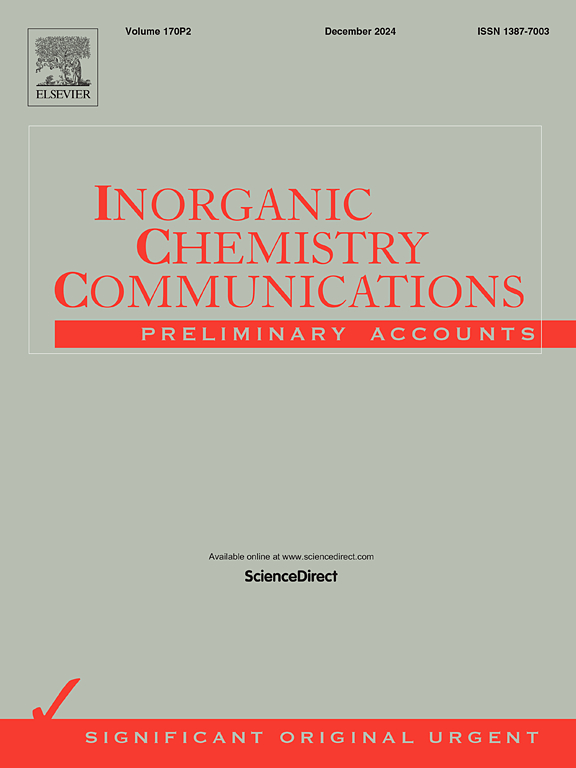Exploring novel synthesis techniques, optical characteristics, and laser constraints of double metal phosphates MNiPO4 (M = Mn, Cu) based on structural analysis
IF 4.4
3区 化学
Q1 CHEMISTRY, INORGANIC & NUCLEAR
引用次数: 0
Abstract
Recently, double metal phosphate compounds have become a research hotspot to explore new materials that could be utilized in different fields of applications. In our paper, two novel materials MNiPO4 (M = Mn, Cu) have been fabricated by microwave-assisted method. The structural and morphology features have been investigated using FTIR, XRD, HRTEM, and BET techniques. FTIR results showed different peaks in the spectra that are attributed to the vibrational modes of the phosphate groups, metal–oxygen bonds, and hydroxyl groups. The pore size distribution analysis shows that MnNiPO4 and CuNiPO4 have a narrow pore size distribution with a mean pore diameter of around 2.22 and 22.5 nm, respectively. The absorbance spectra of MnNiPO4 and CuNiPO4 exhibit a peak at around 500 nm, indicating maximum absorption at this wavelength. Similarly, the optical laser limiting measurement shows that MnNiPO4 is a more effective candidate for applications requiring high laser limiting performance, particularly where higher-power lasers are involved. The present results support the use of MnNiPO4, exploiting certain inexpensive bimetal phosphates as operational components in advanced optoelectronic applications.

求助全文
约1分钟内获得全文
求助全文
来源期刊

Inorganic Chemistry Communications
化学-无机化学与核化学
CiteScore
5.50
自引率
7.90%
发文量
1013
审稿时长
53 days
期刊介绍:
Launched in January 1998, Inorganic Chemistry Communications is an international journal dedicated to the rapid publication of short communications in the major areas of inorganic, organometallic and supramolecular chemistry. Topics include synthetic and reaction chemistry, kinetics and mechanisms of reactions, bioinorganic chemistry, photochemistry and the use of metal and organometallic compounds in stoichiometric and catalytic synthesis or organic compounds.
 求助内容:
求助内容: 应助结果提醒方式:
应助结果提醒方式:


